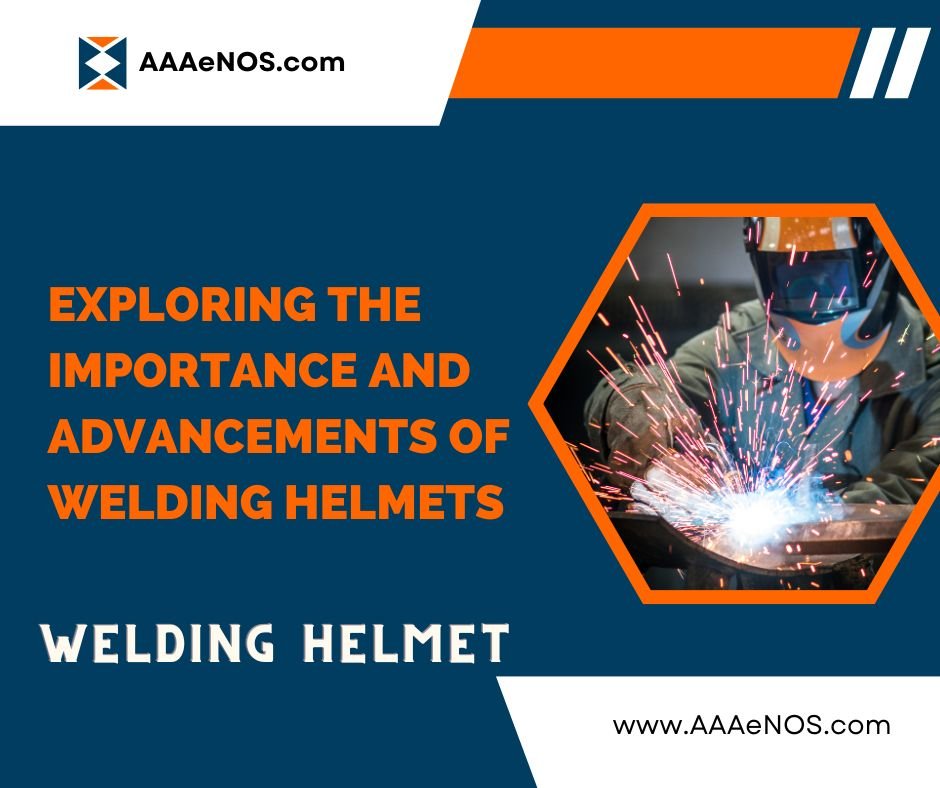Exploring the Importance and Advancements of Welding Helmets

When welding, safety should always come first. The intense heat, sparks, and bright light associated with a welding helmet make it crucial for welders to have the necessary protective equipment to shield themselves from potential hazards. This article will explore why it is essential, its features, and how it safeguards welders during work.
The Importance of a Welding Helmet
It is a crucial piece of equipment that protects the welder’s face, eyes, and neck from intense heat, harmful UV rays, sparks, and debris. Welding processes generate intense light that can cause eye damage, including arc eye (also known as welder’s flash) and long-term vision problems. Additionally, the sparks and molten metal produced during welding can cause burns and injuries if they come into contact with unprotected skin.
It acts as a shield, protecting the entire face from these potential hazards. It is an essential tool that significantly reduces the risk of injuries and allows welders to work confidently and in peace of mind.
Features of a Reliable Welding Shield Helmet
A high-quality welding shield helmet should possess several key features to maximise the recipient’s comfort and safety welder. These features include:
Auto-Darkening Lens: One of the most significant advancements in this helmet technology is an auto-darkening lens. This feature eliminates the need for welders to manually adjust the helmet or lift it repeatedly to check their work, improving efficiency.
UV/IR Protection: Welding processes emit intense ultraviolet (UV) and infrared (IR) radiation. Look for helmets with a high optical rating, such as a shade level of at least DIN 13, to ensure adequate protection.
Adjustable Fit and Comfort: Welding can be physically demanding, often requiring long work hours. Look for helmets with adjustable headgear and a secure fit to accommodate different head sizes and shapes.
Ensuring Proper Helmet Usage
To maximise the effectiveness of a helmet, it is essential to use it correctly. Here are a few crucial guidelines to follow:
Helmet Positioning: Position the helmet correctly, ensuring it covers the face, eyes, and neck thoroughly. The helmet should be secure and not obstruct the welder’s vision.
Lens Shade Selection: Different lens shades may be required for optimal protection depending on the welding process and materials used.
Regular Maintenance: Any equipment requires regular maintenance to ensure effectiveness. Clean the helmet regularly, paying particular attention to the lens, to remove dirt, debris, and spatter that can obstruct vision.
The Future of Welding Shield Helmets
The advancement of technology is also reflected in the helmet industry. Manufacturers are constantly innovating to improve safety, comfort, and efficiency for welders. Some of the emerging trends and future developments in these types of helmets include:
Integrated Respiratory Protection: Combining respiratory protection with these helmets can be a game-changer in safety. Integrated systems that filter out harmful fumes and particles directly from the welding area protect welders.
Augmented Reality (AR) Technology: AR technology can revolutionise welding by overlaying digital information onto the welder’s field of view.
Lightweight and Ergonomic Designs: Manufacturers are continuously working on developing lighter and more ergonomic helmets to reduce strain and fatigue on welders.
Conclusion
In tasks related to welding, safety should always be the top priority. A welding helmet is an essential safety gear that protects welders. These helmets ensure safety and comfort with features like auto-darkening lenses, UV/IR protection, and adjustable fit. By following proper usage guidelines and staying updated with the latest advancements, welders can continue to work confidently and minimise the risk of injuries.





